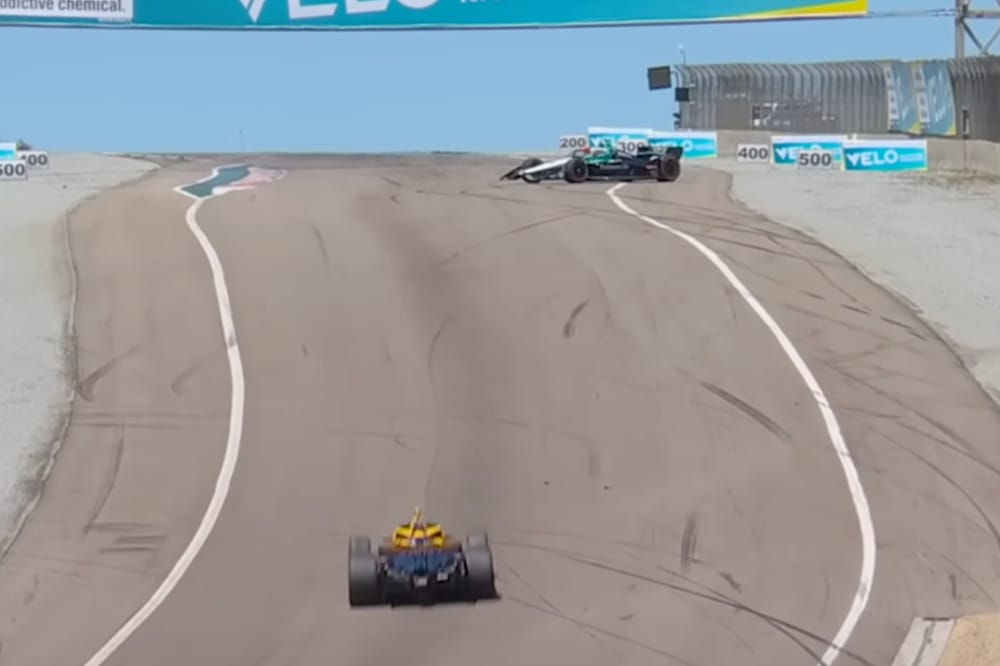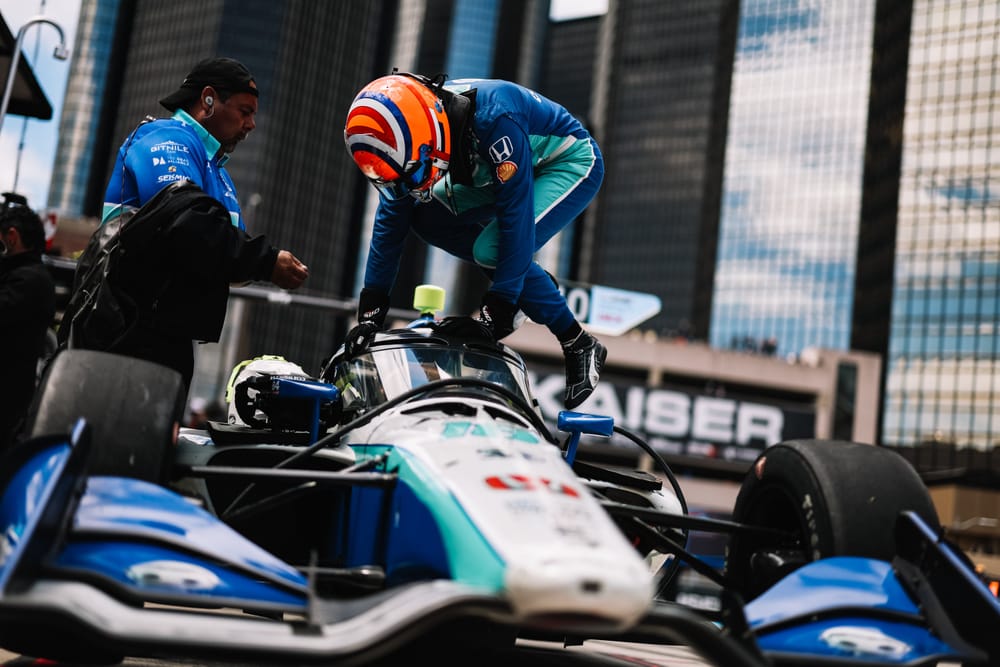“Insane, absurd, ridiculous, nuts” were just some of the words used to describe the delay which meant Marcus Ericsson’s stalled car was sat on the track facing the wrong way around and in a relative blind spot at Laguna Seca.
While TV cameras did not show the spin live, cameras cut to Ericsson pointing backwards and from that moment it took a minute and a half for IndyCar to throw the full course caution - although local yellows were displayed.
The helmet cam footage from Pato O'Ward passing Marcus Ericcson. Yeah, Hinch is right, this is ridiculous. You literally can't see the 28 car until it's too late to avoid a collision.#IndyCar pic.twitter.com/sEi5CnjVGN
— Ryan Erik King (@RyanErikKing) July 27, 2025
It caused a big reaction with Fox’s TV commentators, Will Buxton and ex-IndyCar drivers James Hinchcliffe and Townsend Bell delivering those above-mentioned quotes.
The Fox broadcast also showed an onboard from Pato O’Ward’s car. If this is your first time seeing the incident, I challenge you to try and spot Ericsson’s car first time - while also looking at the road and steering wheel like the driver would - in the video above.
Below, we have overlayed a wider shot so you can see where Ericsson's car is positioned and a car in a similar position to O'Ward when the still from his onboard is taken, which shows the blindspot.
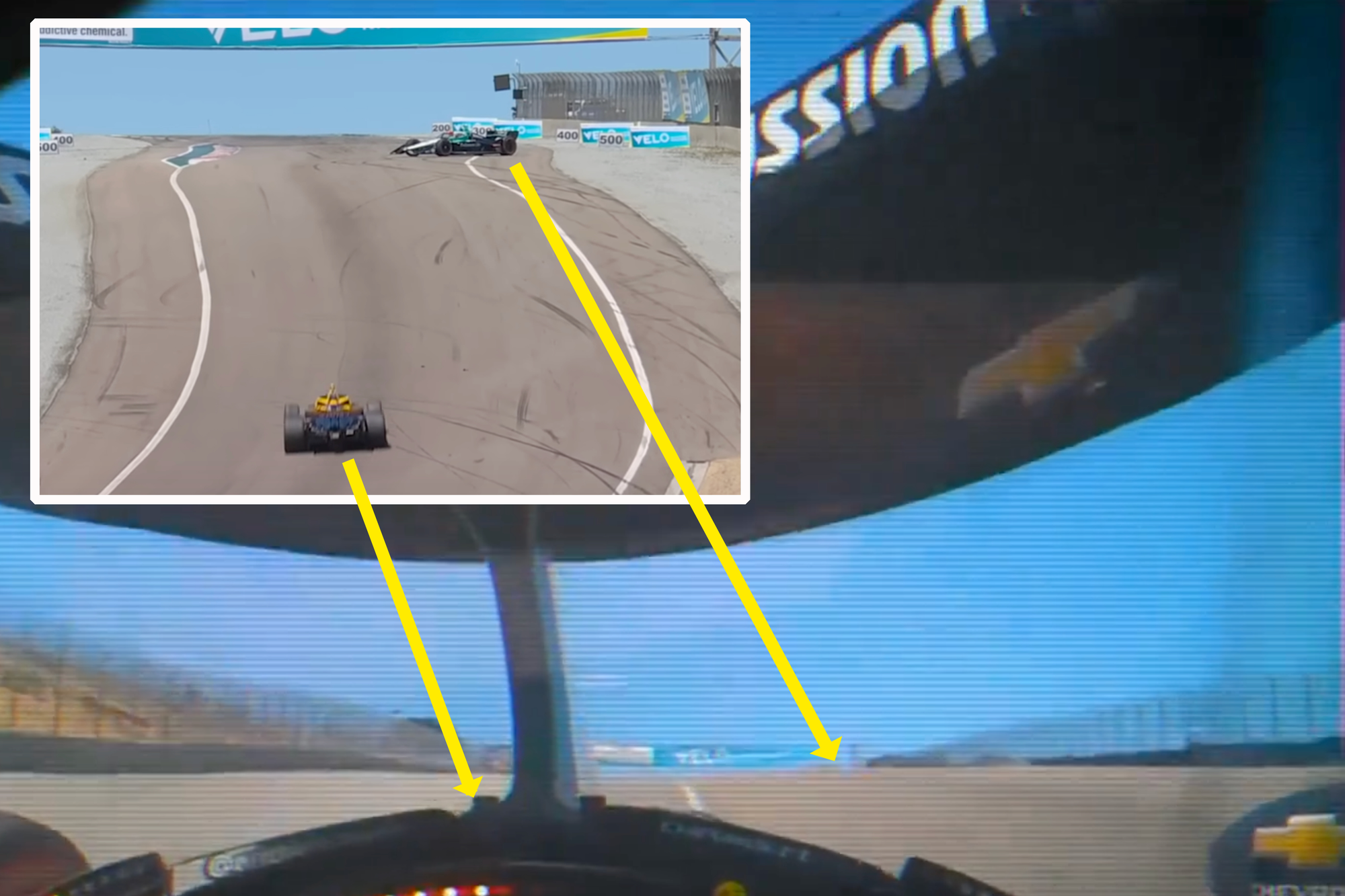
It's like Ericsson isn't even there! Terrifying.
After the race Ericsson tweeted: “Happy to not get hit whilst sitting at a blind spot on the track for 3 laps…” (ed. note - The Race did not count three laps and it was likely fewer)
It’s pretty clear that IndyCar was trying not to call a full course caution and neutralise the race in the hope that Ericsson would get going again.
This was complicated further by the fact that the addition of the hybrid unit mid-season last year, which means that the cars can be restarted by the driver in the cockpit immediately instead of needing one of the safety crew to physically insert the starter motor into the rear of the car.
But Ericsson’s Andretti crew were getting error messages while they tried to give him a steering wheel setting to restart the car.
There's a number of seen and unseen mechanisms IndyCar and its teams have to deal with incidents like this.
There was also a yellow flag at the entrance to Turn 6 as a warning, and drivers get a yellow flag notification on the steering wheel, too.
Under caution for Marcus Ericsson. pic.twitter.com/kCltpsG5md
— INDYCAR on FOX (@IndyCarOnFOX) July 27, 2025
IndyCar also alerts teams to incidents like this via its broadcast radio channel which the teams are obligated to monitor through the race by the rules.
IndyCar reviews all procedures and practices after every race as standard.
Even on road courses, while it's not an obligation, most drivers have a spotter that can alert them to danger, too.
Coincidentally, immediately after the full course caution flew, Ericsson was able to get going again.
“I was definitely driving around thinking, why is there a car sideways - well, technically backwards - going into the Corkscrew, and we're green for two laps?” said race runner-up Christian Lundgaard.
“Yes, there's a local yellow, but if someone isn't really paying attention, changing a switch on the steering wheel, it can go terribly wrong.”
DNF in Laguna. We were having a decent day until the skid plate broke and folded under the car making me a passenger. Happy to not get hit whilst sitting at a blind spot on the track for 3 laps... Onto Portland #ME28 #INDYCAR @AndrettiIndy @HondaRacing_US pic.twitter.com/XIYJehpAzB
— Marcus Ericsson (@Ericsson_Marcus) July 28, 2025
While it’s fairly obvious this was a dangerous situation that needed taking care of quicker, you do have to take into consideration that IndyCar is criticised whatever it does. If it called the caution immediately there it would no doubt be criticised for neutralising the field and giving drivers another chance to attack the dominant Alex Palou.
Plus, the local yellow does already encourage drivers to slow down and be aware of an incident happening.
However, as you can see from O’Ward’s onboard, Ericsson was stopped in a really dangerous place and perhaps race control didn’t realise how much of a blind spot there is where Ericsson stopped - because cars don’t ever stop there - and that’s why the caution was held off for as long as it was.
Regardless, this is a good opportunity for learning and IndyCar has shown that it can do that.
It was too slow to put out a full course caution for Louis Foster crashing at Gateway. There's no guarantee an earlier caution would have prevented the following incident when Josef Newgarden crashed into him, but you certainly have to believe it would have reduced the opportunity.
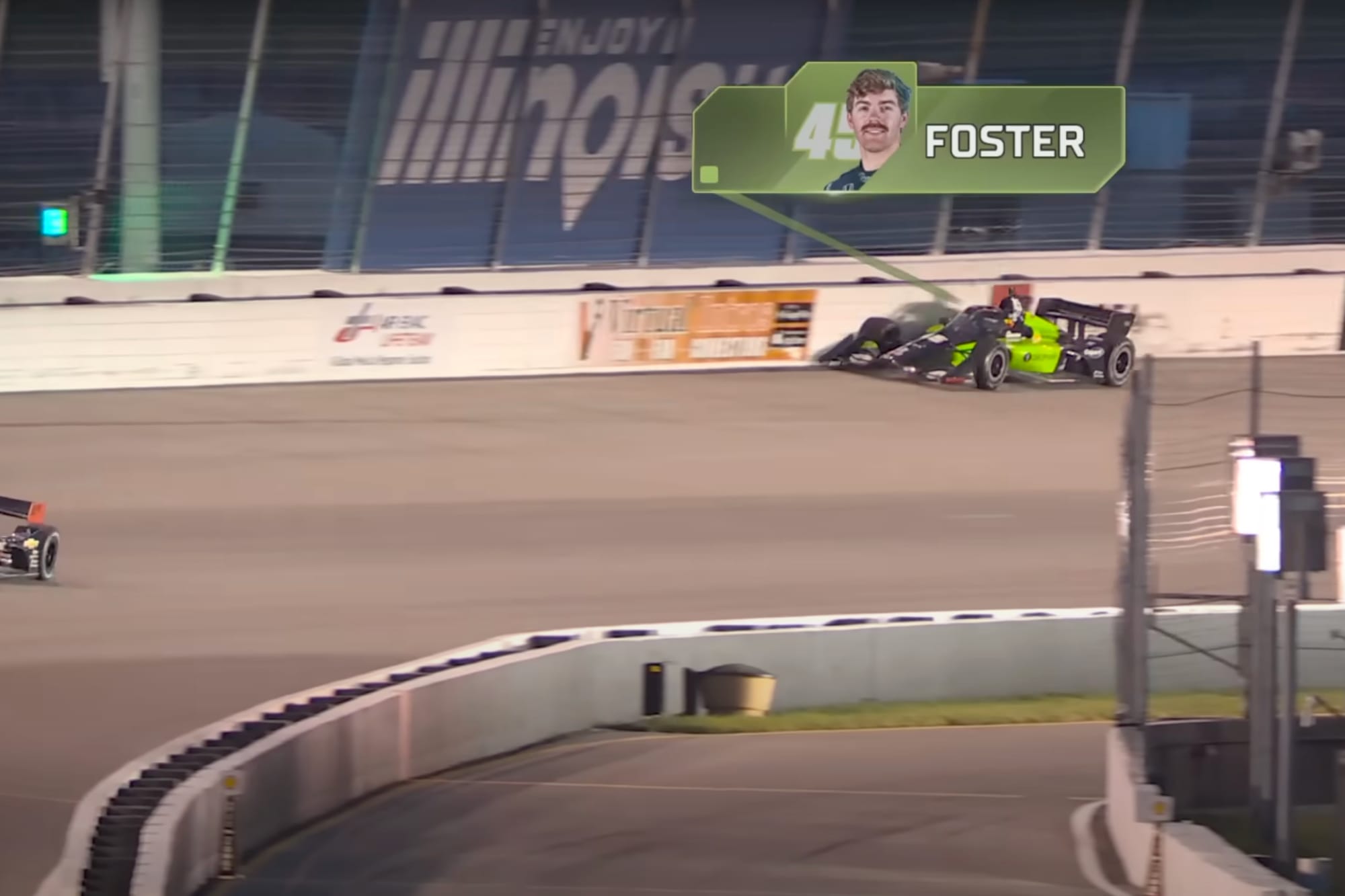
You can see from the picture above Foster is touching the wall and extremely likely to kick off a prolonged accident, and the green flag is still visible to the left.
And you can see the image below, Foster has a loose wheel and is pointing backwards on the main straight and there is still a green flag (top left), with the blue car of Newgarden about to have nowhere to go.
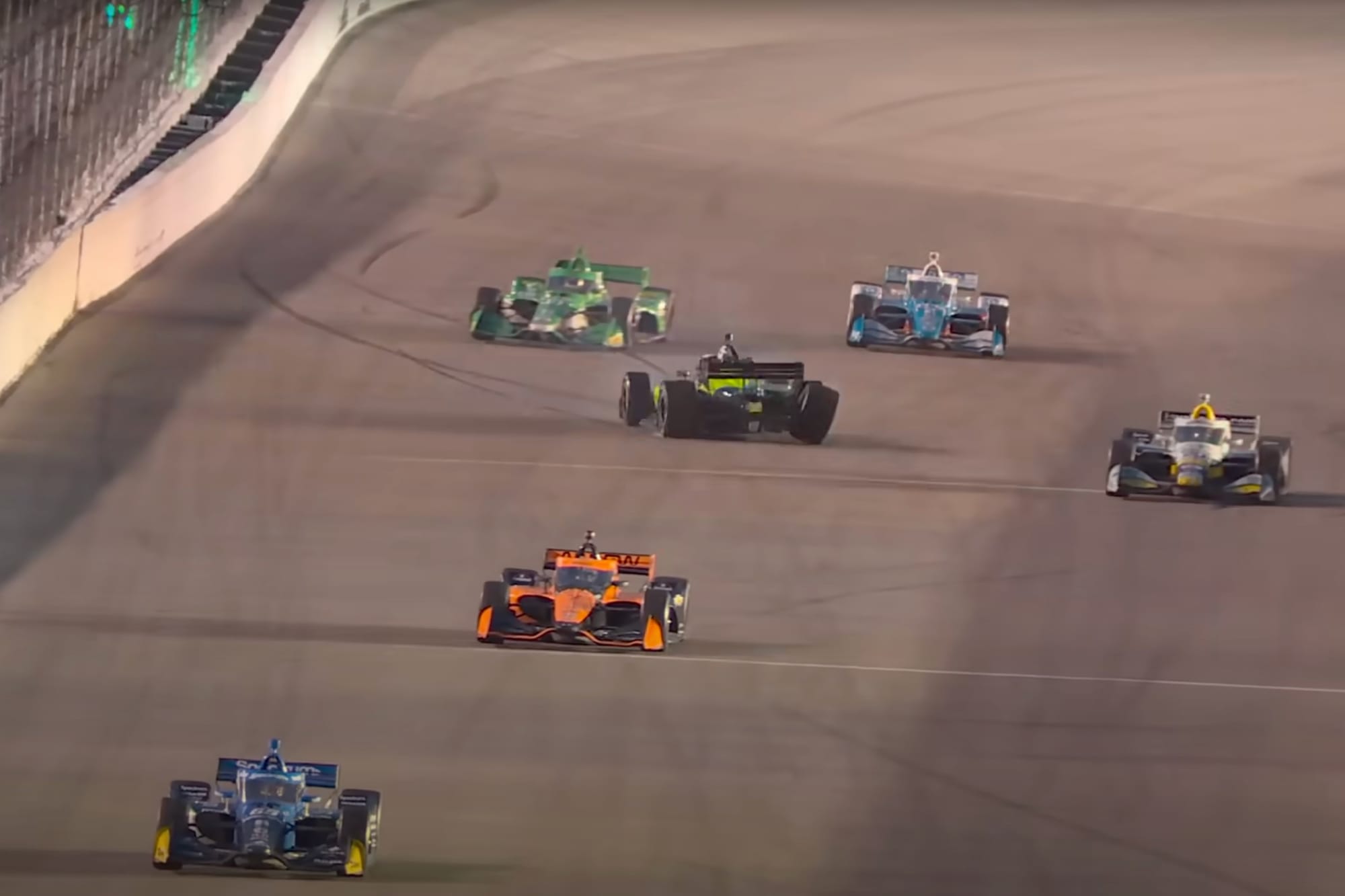
The next time a similar incident happened in that race, the yellow was already out before that driver had finished crashing, just after they hit the wall, similar to where Foster was in the first picture. That gave drivers more time to slow and react.
Of course, these are isolated incidents and all the good calls IndyCar makes tend to go without much recognition, such is the nature of things.
An on-board look from Josef Newgarden's No. 2 after contact with Louis Foster. pic.twitter.com/s7vVzjtppW
— INDYCAR on FOX (@IndyCarOnFOX) June 16, 2025
But one of these incidents resulted in a massive crash and thousands of dollars of damage, and the other at Laguna almost did. It's important for everyone these incidents are analysed, which I'm sure IndyCar will do in great detail.
Another incident created a talking point

Another incident caught the eye in the race when Rinus VeeKay was punted off unceremoniously by Kyle Kirkwood at Turn 4 and became beached in the gravel.
IndyCar also elected not to call an immediate full course caution here.
This is a competition decision in keeping with a precedent set by IndyCar which was called for by drivers for a long time.
A good day ruined by someone else’s mistake. We showed really good pace, until that moment. Eyes forward to Portland! 👀 pic.twitter.com/k1Im47Dnbi
— Rinus VeeKay (@rinusveekay) July 28, 2025
It was previously commonplace that a caution would close the pits and give a massive advantage to anyone who had pitted before the caution, because those who had stayed out longer would have to pit under the caution and drop back because the pack had been bunched.
This new tactic of delaying the full course caution means - providing IndyCar deems the car to be in a safe place - it will not call the caution until the lead cars have had the opportunity to pit.
Had it called an immediate full course caution for VeeKay's crash, polesitter and race winner Palou would have likely had his race compromised through no fault of his own. And given he’d got the pole and was the fastest car in the race by an absolute stratosphere, that would have been sub-optimal from a sporting point of view.
The delayed full course cautions are a great way for IndyCar to ensure the races aren’t becoming too topsy-turvy and that those delivering on the competition side are not sabotaged by things out of their control.
“They should keep the pits open as long as they can and allow the leaders to pit at every opportunity,” said Laguna podium finisher Colton Herta.
“I think it's not fair to be one of the faster ones and qualify well and have your day screwed by a yellow. It's happened to everybody in this series. But when you run up at the front more consistently, it burns you more often.
“It [this policy] is something that I think is a real plus from IndyCar. I think it's fair, and I think it should continue to happen.”
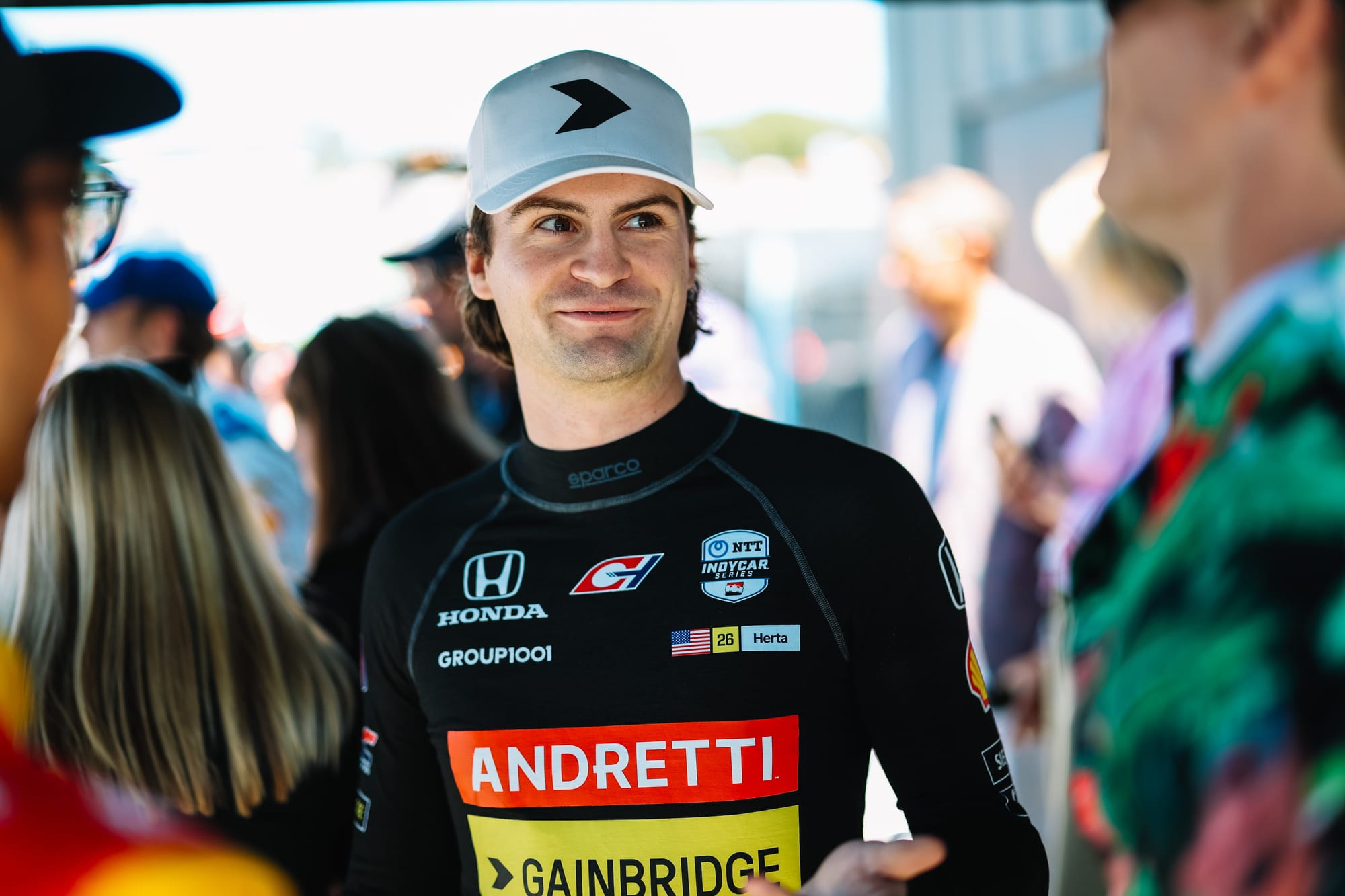
Personally, I’m not totally convinced VeeKay’s car was in a fully ‘safe’ position, had someone spun or collided entering Turn 4.
That being said, local yellow flags warn drivers to back off, so the chances of something bad happening there were slim providing drivers followed the flags and don’t have any bizarre mechanical failures.
And IndyCar instructs the cars that do need to pit to do so as quick as possible so that the number of laps before calling the caution is minimal. It's not like the delay in throwing the caution for VeeKay's car could've ever lasted five-to-10 laps or something.
On this occasion, though, I felt VeeKay's car was still quite close to the track - maybe too close for comfort. But I understand what IndyCar was trying to do and the lose-lose situation it found itself in - again.
Ericsson's IndyCar season summed up
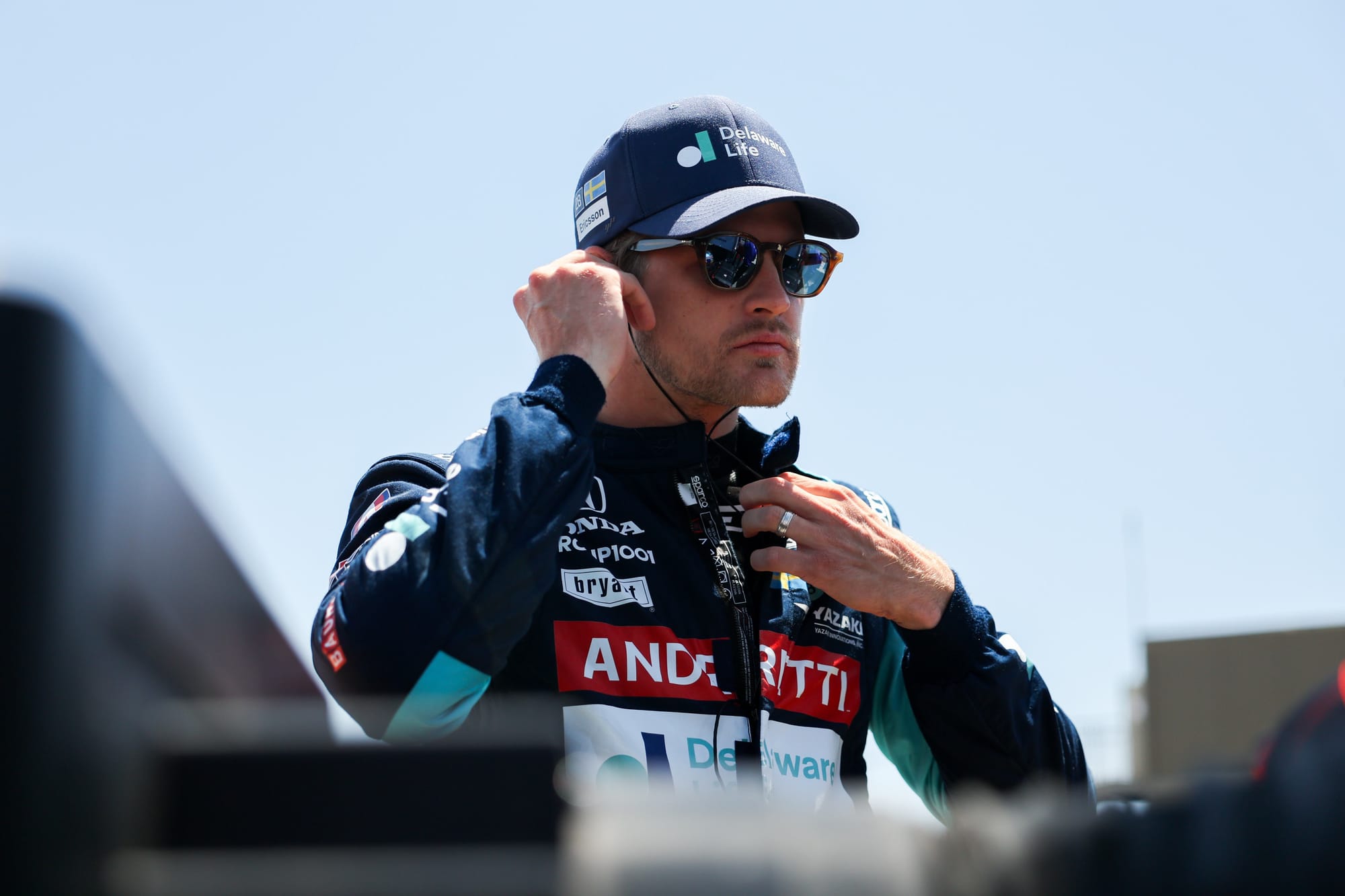
After a breakthrough top five at Toronto last week - his first of the year and only his second top-10 of the season - The Race IndyCar Podcast panel thought this might be a turnaround for Ericsson.
Yes, he's made mistakes and not always driven to the best of his ability in his Andretti spell, but people have also been too quick to criticise the Swede's races without digging into what's actually happening.
Read more about Ericsson's Toronto race in our winners and losers feature, here
Laguna was a perfect example, where a fuel pump issue meant minimal running in FP1 and FP2 was cancelled. His first proper laps were in qualifying where he managed a respectable 15th, two tenths off graduating to the Fast 12.
In the race, yes, he spun. But the cause of this was a skid plate breaking and folding under his car, so that wasn't his fault either.
There have been few runs that I can remember covering in IndyCar that were as unlucky as Ericsson has had at Andretti these last two years.
Luckily of all the drivers in the field, Ericsson is used to dealing with being under the microscope. He's much better than his results have shown and, at some point, a bit like Josef Newgarden at Penske, things have to turn around.


